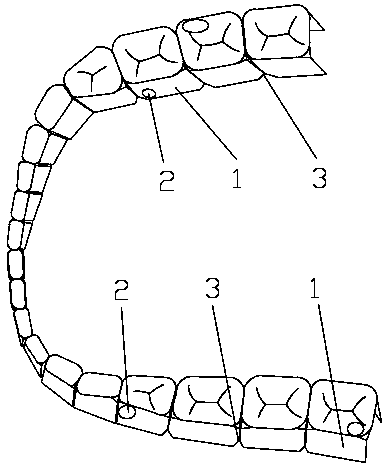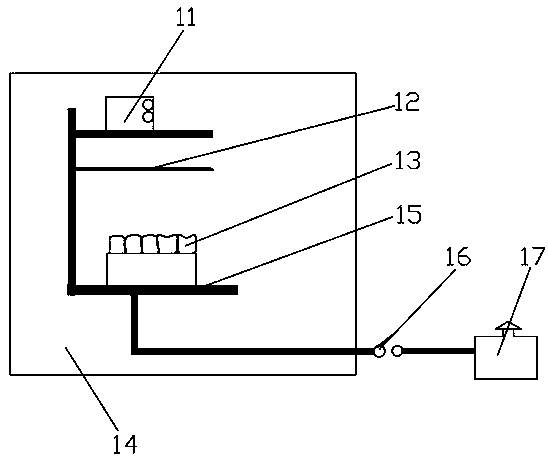Desensitization reagent fixing device for treating dentin hypersensitivity as well as preparation method and forming method of fixing device
A technology for fixing devices and allergies, applied in dentistry, medical science, etc., can solve the problems of unable patients, prolonging the course of treatment, uneven effect, etc., to solve the inconvenience and limitations, improve the treatment effect, and facilitate the operation process Effect
- Summary
- Abstract
- Description
- Claims
- Application Information
AI Technical Summary
Problems solved by technology
Method used
Image
Examples
specific Embodiment approach
[0040] A desensitizing reagent fixing device for the treatment of dentin hypersensitivity, the fixing device is shaped like a dental brace, mainly including a dental tray part 1 and a sensitive treatment area 2, and the dental tray part 1 is formed into a Three-dimensional film cavity structure matching the full dental arch of the maxillary teeth and mandibular teeth. The opening of the tray part 1 is provided with an undercut structure 3, which is connected to the tooth through the undercut structure 3; the depth or width of the tray part 1 The surface is located within the thickness range of 0.12-0.28mm from the tooth body, and the cavity structure for storing the desensitizing agent is preset to form a sensitive treatment area 2. The optimal thickness in this embodiment is 0.2mm; when using the desensitizing agent to desensitize the sensitive tooth body During the sensitivity treatment, the patient can place the desensitization reagent in the corresponding sensitive treatmen...
PUM
 Login to View More
Login to View More Abstract
Description
Claims
Application Information
 Login to View More
Login to View More - R&D
- Intellectual Property
- Life Sciences
- Materials
- Tech Scout
- Unparalleled Data Quality
- Higher Quality Content
- 60% Fewer Hallucinations
Browse by: Latest US Patents, China's latest patents, Technical Efficacy Thesaurus, Application Domain, Technology Topic, Popular Technical Reports.
© 2025 PatSnap. All rights reserved.Legal|Privacy policy|Modern Slavery Act Transparency Statement|Sitemap|About US| Contact US: help@patsnap.com


